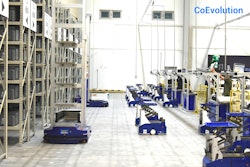
*This content brought to you in partnership with SAP*
Over the next few months, Todd Simms, vice president, Industry Strategy Manufacturing, FourKites, believes a wide array of supply chain disruptions will occur throughout the U.S.
For instance, various economic and environmental issues will likely negatively impact the nation’s supply chain, including high interest rates and energy expenditures, as well as Southern California’s emissions laws, leading to shortages and increased costs. In addition, several political and regulatory issues will potentially be noticed, such as trade and inflation obstacles, along with compliance complications and a possible railroad strike.
In response to each of these primary disruptions, businesses can either recover from them rather quickly or recuperate much slower than they’d prefer. According to Simms, their recoveries will depend mainly on their visibilities within their supply chains, which they should utilize beyond logistics and transportation.
“Is their data being shared and interconnected with other businesses along the lines of planning, sourcing, creating, delivering and service? If not, they should definitely consider doing so,” Simms stresses. “The key reason is this: businesses that harness such data, and are then able to ‘action’ it, so to speak, will become less reactive and ultimately more proactive and predictive, in turn.”
In order to create logistics resiliency on a short- and long-term basis, Simms also stresses that businesses’ time to recovery (TTR)—and, again, visibility—will be critical. After all, each component will enable businesses to act, rather than react, as they determine exactly how to respond to the various disruptions that may occur in the coming months.
Simms thinks businesses can either avoid disruptions (like shutdowns and outages, for example) altogether or absorb them completely. To absorb disruptions, businesses should pivot in certain areas of their supply chains and mitigate the overall impacts that each of these possible disruptions may have.
“If avoidance and absorption aren’t possible, such as during crises like the unpredictable COVID-19 pandemic, how quickly can businesses recover? In preparation for the next crisis, they should have an answer to this question,” emphasizes Rene Vallejo, senior executive, SAP Business Network for Logistics. “And the answer is this—a plan that will enable them to still grow, gain market share, acquire new talent and retain longstanding employees, despite the negative effects of volatile disruptions and downturns.”
Through a proper plan, companies will have a faster TTR than they otherwise would have, leading to a diminished risk of losing their market shares and talent.
“It’s also important to remember that visibility is a journey and an evolution,” Simms says. “The real-time transportation visibility platforms (RTTVPs) world didn’t exist 8 years ago until FourKites founder and CEO Mat Elenjickal pioneered it. Yet, the market is demanding perfection today, especially regarding data accuracy, along with other aspects of visibility.”
He adds, “This is great, as the market continues to recognize the value of visibility everywhere and realizes how RTTVPs, as well as all of the data associated with them, can be harnessed. However, it’s important to understand that businesses must also be involved directly with their RTTVPs, in order to interconnect and update the data that’s available in the supply chain ecosystem.”
This interconnection and upgrading, concerning data within the supply chain ecosystem as a whole, is projected to continue to advance and improve throughout 2023. As a result, businesses, along with their supply chains, must be early adopters within the visibility world. In doing so, they’ll be better prepared to recover from Simms’ anticipated future supply chain disruptions on a much timelier basis. And, due to this timeliness, they’ll eventually notice higher logistics resiliency, more potential, future growth, higher market shares and top talent retention.
“If businesses are late to the visibility game, then their recovery, in the midst of the next disruption, may be late as well—potentially much later than they’d prefer,” Simms states. “Proper data sharing and interconnection, along with planning and the usage of visibility platforms, will truly be the difference between being reactive and predictive, as well as the ultimate difference between surviving and thriving.”
For more information about resilient supply chain logistics, please tune into this webinar recording. Recorded on November 1, the webinar—co-hosted by Simms and Vallejo, along with Rob Haddock, group director, Transportation Strategy, Coca-Cola—also discusses the ways in which SAP and FourKites can help businesses achieve short- and long-term logistics resiliency.
Disclaimer: The opinions provided in this blog aren’t shared by Rob Haddock or The Coca-Cola Company.



















